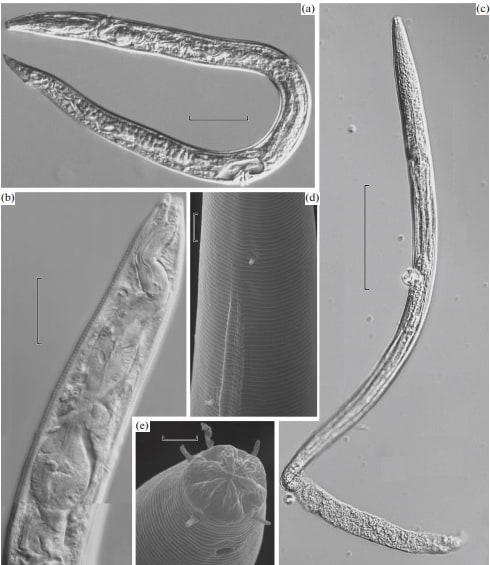Russian scientists rouse 40,000 year-old worms from Siberian permafrost

 Remember “Pet Sematary”, the 1983 Stephen King novel about dead cats and dogs coming back to life? If that scared you, you might want to stop reading this frightful story of 40,000 year-old worms right now.
Remember “Pet Sematary”, the 1983 Stephen King novel about dead cats and dogs coming back to life? If that scared you, you might want to stop reading this frightful story of 40,000 year-old worms right now.
Scientists in Russia have managed to revive worms that were frozen in the ground for approximately 40,000 years. We already knew that these particular roundworms, called nematodes, are real survivors. They have been found in polar regions, in fresh and salt water, and at the very peaks and troughs of the earth.
But this discovery brings a whole new meaning to the word persistent. The scientists, whose work was recently published in the journal Doklady Biological Sciences, analyzed more than 300 samples of permafrost deposits of different ages and origins, buried soils and fossil rodent burrows and found that two samples were shown to contain viable nematodes. The insects were living about thirty metres beneath the earth’s surface.
“It is obvious that this ability suggests that the Pleistocene nematodes have some adaptive mechanisms that may be of scientific and practical importance for the related fields of science, such as cryomedicine, cryobiology, and astrobiology,” the authors said in the study’s preamble.
The study of these worms is not a new pursuit. Nathan Cobb, known as the “the father of nematology in the United States”, identified over a thousand species of them. In somewhat ghostly terms, he described just how prevelant nematodes are.
“In short, if all the matter in the universe except the nematodes were swept away, our world would still be dimly recognizable, and if, as disembodied spirits, we could then investigate it, we should find its mountains, hills, vales, rivers, lakes, and oceans represented by a film of nematodes,” he said. “The location of towns would be decipherable, since for every massing of human beings, there would be a corresponding massing of certain nematodes. Trees would still stand in ghostly rows representing our streets and highways. The location of the various plants and animals would still be decipherable, and, had we sufficient knowledge, in many cases even their species could be determined by an examination of their erstwhile nematode parasites.”
A modern day counterpart of Cobb says there is little reason to doubt the veracity of the paper that claims these findings. Robin M. Giblin-Davis, the acting director of the Fort Lauderdale Research and Education Center at the University of Florida told Gizmodo that its his opinion as a nematologist that this is very possible.
These 40,000 year-old worms are real survivors
“Theoretically, it is possible that if the organisms are protected from physical damage that would compromise their structural integrity during their frozen internment, they should be able to revive upon thawing/rehydration for very long periods of time,” he said.
So, what are the implications of this finding? Could animals that aren’t microscopic one day be brought back to life?
At a futuristic facility outside of San Diego, the answer seems to be a resounding maybe. The facility, called The Frozen Zoo, has frozen the cells of more than 1200 different animals in liquid nitrogen. Dr. Oliver Ryder, genetic director of the zoo, says we don’t know how it will play out.
“The cells preserved at the Frozen Zoo are remote and distant, and not connected at to all the ecosystem,” he told Mashable. “All it is, is the essence. But cells are life, and one of the questions is, what can we do with it?” he said.
Nick Waddell
Founder of Cantech Letter
Cantech Letter founder and editor Nick Waddell has lived in five Canadian provinces and is proud of his country's often overlooked contributions to the world of science and technology. Waddell takes a regular shift on the Canadian media circuit, making appearances on CTV, CBC and BNN, and contributing to publications such as Canadian Business and Business Insider.
